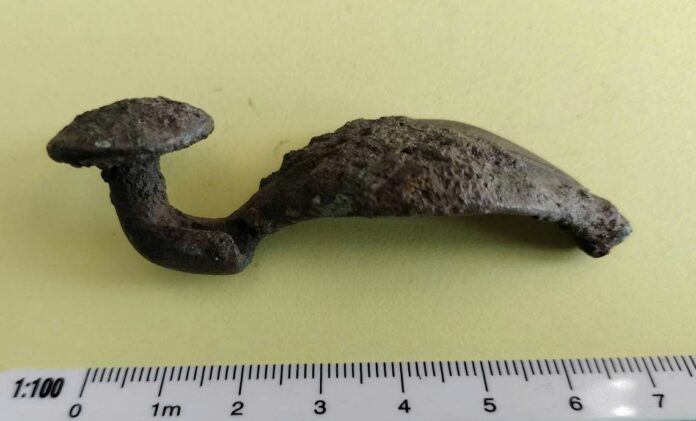Anonymous Detectorist Makes Remarkable Find
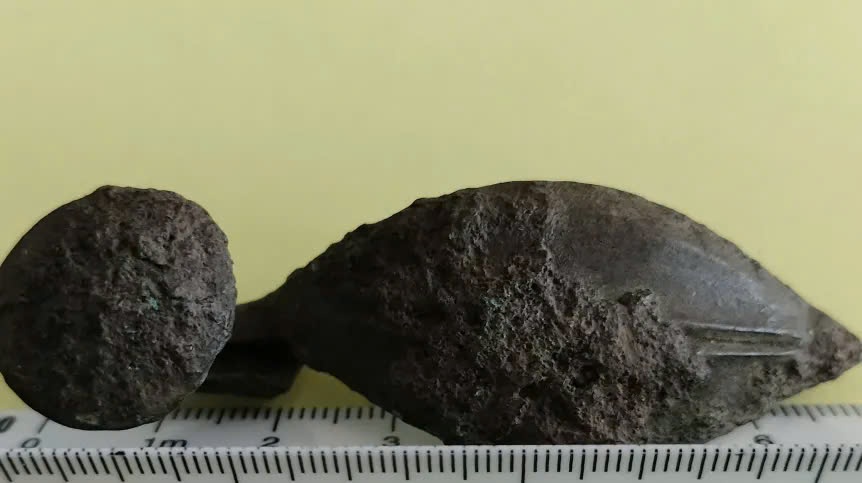
In a thrilling discovery near the village of Śniatycze in south-eastern Poland, an anonymous metal detectorist has unearthed a trio of artifacts, including an exceptionally rare bronze brooch dating back 2,500 years. This finding marks only the fifth of its kind in the country, offering a fascinating glimpse into the ancient Lusatian culture.
A Glimpse into Lusatian Craftsmanship
The bronze fibula, measuring 7 cm in length with a maximum bow width of 2.4 cm, showcases intricate details that have captivated archaeologists. Its unique design features a mushroom-shaped end on one side and a parachute-shaped end on the other, with delicate decorations adorning the bow’s upper surface.
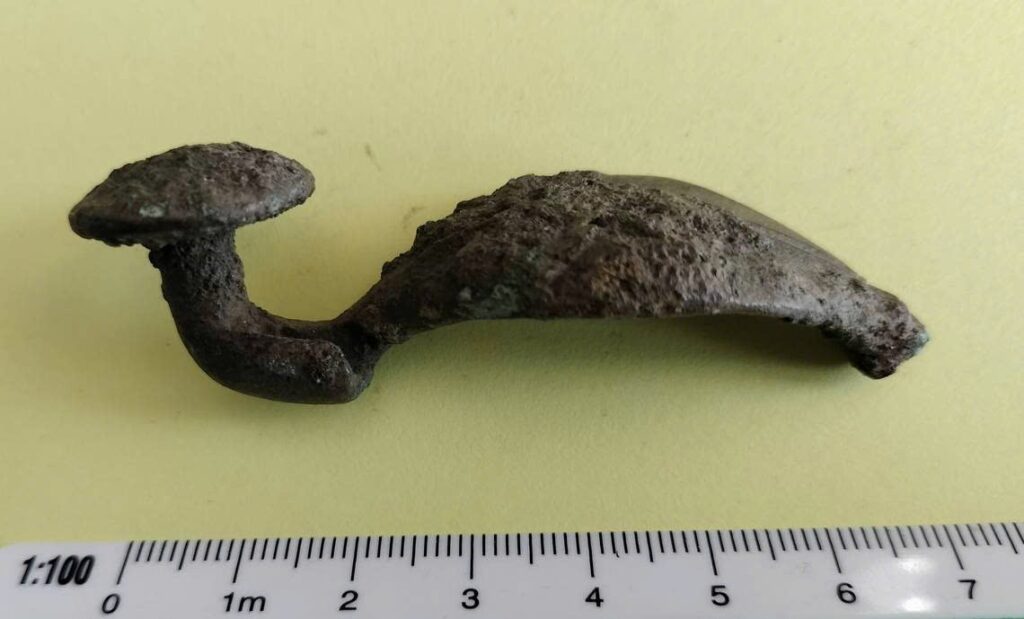
Unraveling the Mysteries of the Lusatian Culture
Experts have attributed this masterpiece to the Lusatian culture, dating it to the Hallstatt D period (circa 550-400 BC). This culture, which flourished during the Late Bronze Age and Early Iron Age, spread across much of modern-day Poland and neighboring regions.
A Rare and Significant Discovery
Wiesław Koman, an archaeologist from the Zamość branch of the Provincial Office for the Protection of Monuments in Lublin, emphasizes the importance of this find: “This is the fifth fibula of this type found in Poland. It’s of great importance both from a conservation standpoint and for research purposes.”
Bonus Finds: Medieval Weapons
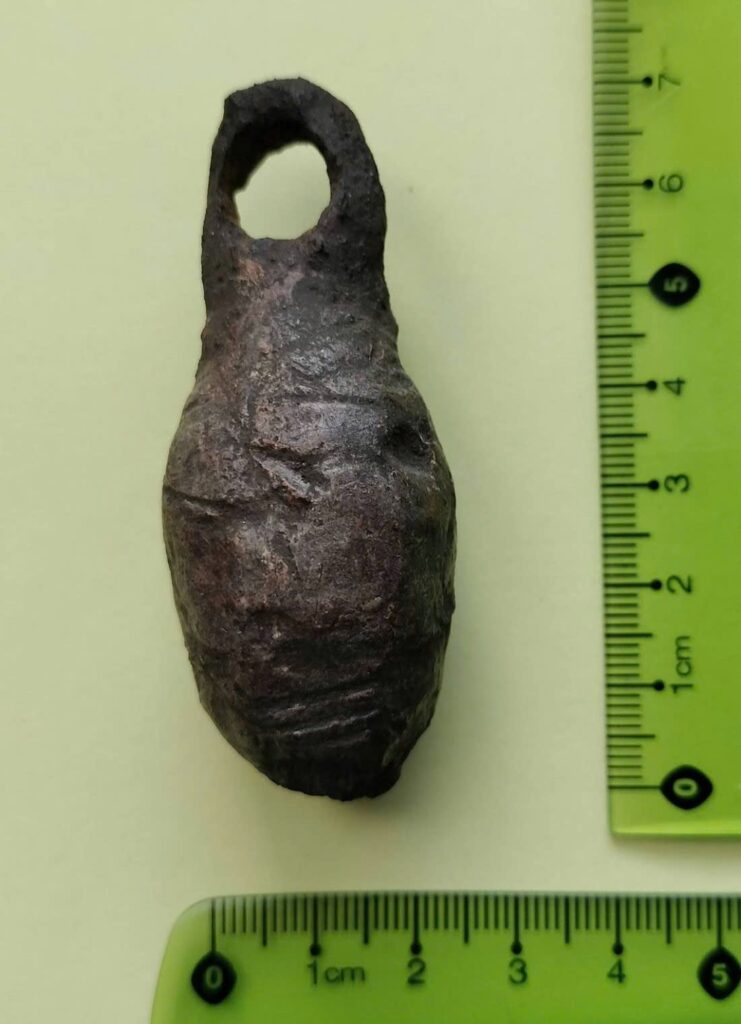
The detectorist’s lucky streak didn’t end with the brooch. Two medieval weapons were also uncovered at the site:
- A 700-year-old throwing weapon, likely a flail head from the 11th-13th century
- A well-preserved 500-year-old battle axe, dated to the 13th-15th century
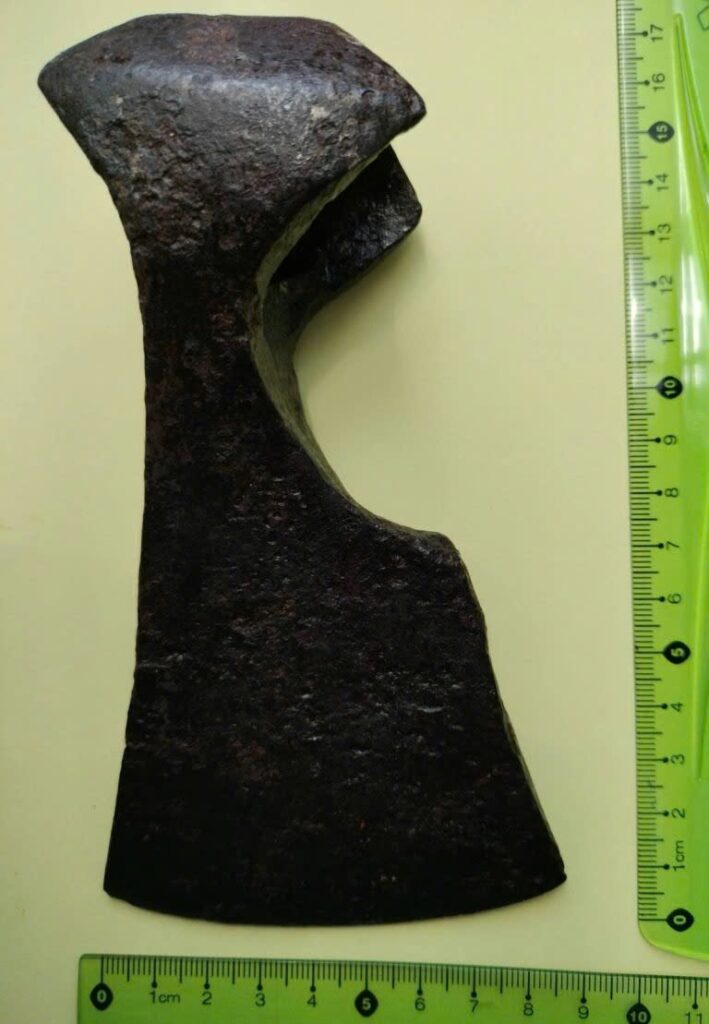
Preserving the Past for Future Generations
The artifacts are set to be transferred to the Zamość Museum, where they will be preserved and studied further. This remarkable discovery not only adds to our understanding of ancient Polish history but also highlights the valuable contributions that responsible metal detecting can make to archaeological research.
